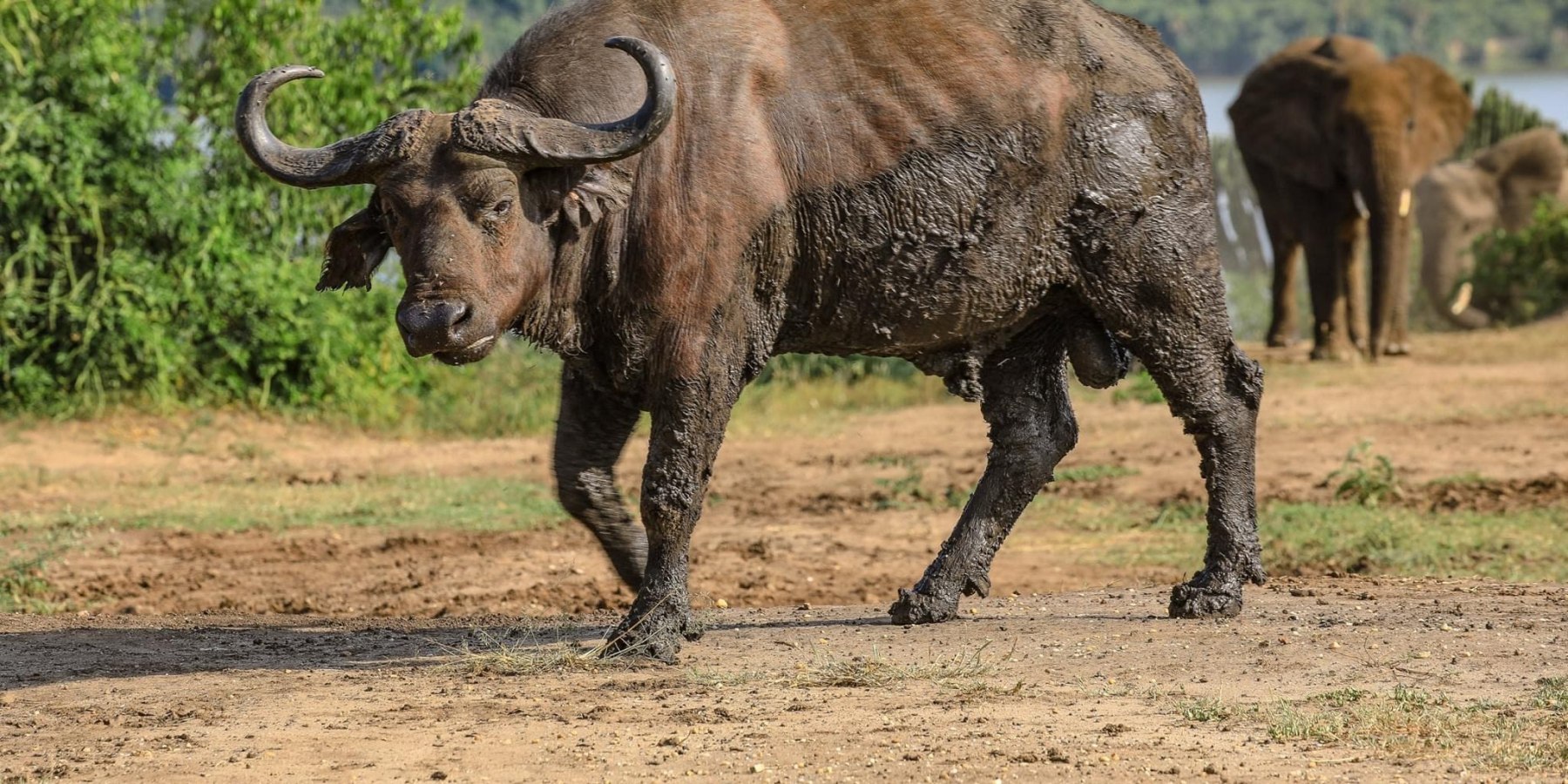
African buffalo is also known as a Cape Buffalo!
The African buffalo is not an ancestor of domestic cattle and is only distantly related to other larger bovines. Its unpredictable temperament means that the African buffalo has never been domesticated.
The adult buffalo's horns are its characteristic feature: They have fused bases, forming a continuous bone shield across the top of the head referred to as a "boss“. They are widely regarded as among the most dangerous animals on the African continent, and according to some estimates they gore, trample, and kill over 200 people every year. The buffalo are known for their surprise tactics where they can completely blindside unsuspecting humans by going behind them to pummel them to their death.
The African buffalo is one of the most successful grazers in Africa. While not particularly demanding in regard to habitat, they require water daily, and so they depend on perennial sources of water. Herds of buffalo mow down grasses and make way for more selective grazers. When feeding, the buffalo makes use of its tongue and wide incisor row to eat grass more quickly than most other African herbivores.
They have a mob mentality. When a buffalo is threatened, they’ll gang up and attack in groups against the predator. Because of their incredible support of each other, buffalo are thriving in the wilds since they have very few predators, and the ones that do attack, have little chances of successfully making a kill.
Although a female won’t lead the herd, the dominant male is “bossed” around by females that will vote in wherever direction they wish to travel to. When migrating, the females will “vote” by forming together to go in the direction they want, leaving the males no choice but follow them or get left behind. The calves are born during the rainy season, and they tend to stay close to their mothers until they are about two years old, much longer than most young mammals.
The oxpeckers eat flies and ticks off their backs, helping them combat diseases transmitted by the pests. The odd relationship these giant, violent animals have with the fragile birds is special as they assist each other in their survival.
#AfricansafariswithGodie
#visitUgandarwandatanzania #Mammalsofeastafrica

